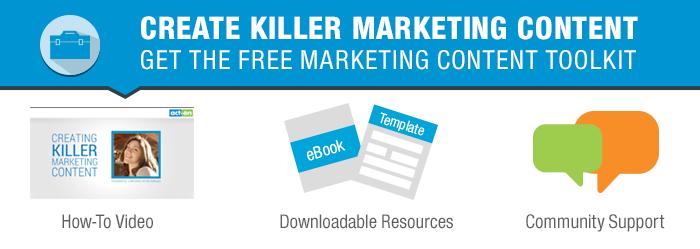You may have heard that marketing nirvana lies in finding the perfect balance of owned, earned and paid media. No doubt you’ve mastered the owned and paid parts; you’ve got a website brimming with useful content and you’re smart and strategic about your advertising dollars.
If you’re a little hazy on what earned media actually is, though – much less whether it’s right for you and your business – you’re not alone.
We’ll tackle that last part in a minute. But first let’s step back and take a look at …
The three types of media
Paid media
This is what most of us consider traditional media: typically TV and radio, print ads, direct mail, and trade shows. The digital era brought a brave new world of options and ways to spend: search engine marketing, pay-per-click, native ads, and even new ad types on social channels such as Facebook.
Owned media
This is the content that’s all yours – your website, blog posts, whitepapers, eBooks, e-newsletters, videos, podcasts, and all the content on your social media channels. And because there’s a lot of competing content out there, it’s more important than ever to make sure your content is effective: useful, informative, inspiring, entertaining, and targeted specifically to your audiences.
Earned media
Whether you call it PR, word-of-mouth marketing, social sharing, or advocacy, this is the stuff that every marketer has craved since the dawn of time: fans of our brand or business singing our praises – whether in the form of positive press, product raves and reviews, or kudos about our thought leadership – to legions of potential customers via mentions, comments and links on Facebook, blogs, forums, and review sites.
Getting this type of engagement used to be strictly the job of PR pros. Today, with better tools and more channels to play in, small-business marketers are reaching their audiences where they’re active, engaging them with content they care about, and finding ways to amplify the conversations that result.
Getting earned media isn’t easy – it takes time and planning. But using it along with paid and owned media – by creating great content and helping it along with some paid promotion – can help you create a cohesive, connected marketing strategy based on providing real value to your customers before, during, and after the sale.
Why is earned media effective?
- It’s based on trust. As consumers increasingly ignore traditional advertising and spend more time researching purchases online, earned media is the most trusted and credible form of content for a brand. In a 2014 study by BrightLocal, 88% of consumers said they trust online reviews as much as personal recommendations, up from 79% in 2013. The trust factor extends to the B2B world too, and LinkedIn has become an increasingly popular hub for pros seeking advice.
- It generates leads. Anyone who retweets, embeds, reviews, shares, comments, likes, and curates your paid and owned media elements generates earned media. Inventor and entrepreneur Christina Daves says that if we build campaigns and processes to turn these amplifiers into subscribers, attendees, participants and, finally, customers, we can create the ultimate lead generation machine.
- It’s enduring. Product reviews, advice and thought leadership pieces, and guest blog posts are eternal, forever showing up in search results. Especially if you’ve researched and included the keywords that make it easy for your audience to find.
- It works at all stages of the sales funnel. Earned media is good for awareness, for validating a decision, and for rallying advocacy and encouraging post-sales customer growth.
- It’s measurable. Although lots of companies consider earned media purely a branding activity that drives awareness, it is possible to measure its effects and even calculate its ROI. How you measure it depends on your goals, whether you’re seeking to drive traffic to your blogs and website, increase your search engine rankings, or generate leads.
- It’s contagious. A 2014 study by researchers at University of California, Yale, and Facebook found that moods can spread virally through social media sites like Facebook, and that positive vibes spread faster than negative ones.
If you’re one of those marketers who’s convinced only by cold, hard facts, check out these 50 stats on why earned media is so awesome.
How to generate earned media
You’ve got two essential ways to do this:
1. Tap into traditional media
Figure out what your story is, then reach out to the press and pitch it. Look for a tight fit in terms of topics for that particular publication or audience.
 For B2C companies, you could reach out to the local newspaper’s features editor (for a human interest story) or if you’re doing something highly visual and immediate, TV might be a good bet.
For B2C companies, you could reach out to the local newspaper’s features editor (for a human interest story) or if you’re doing something highly visual and immediate, TV might be a good bet.
For B2B, you could pitch to the business editor of the local paper (a story might be good for recruiting), but trade media’s more narrow focus can make those vehicles more effective by letting you zero in on your target audience. For example, if you’re launching a new food product that restaurants might buy, you could pitch the trade magazine “Restaurant Start Up and Growth.”
Be aware that the press is not interested in pitching your product. (That’s what paid media is for.) Their goal is to grow their audience (and the corresponding value of their advertising), so they’re looking for stories their audiences (and new readers/viewers) will want to read or watch or share. Remember too that they will produce those stories how they choose to; you can’t control how they will shape the story. There’s always a risk that you won’t like what you read.
By the way, if you’re going for more PR and want to measure the value of this type of earned media coverage, Contently offers a helpful PR scorecard.
2. Tap into digital media
The key to earned digital media is getting your truly effective and engaging content in front of your fans and potential customers so they can easily find it – and share it. But how?
- Share on social media. You’re probably already doing this on your LinkedIn, Twitter, and Facebook channels. And ideally, you’re always looking for ways to improve and refine your messaging. If your content is visual, make sure you’re taking advantage of this powerful asset on channels like Instagram and Tumblr. Neil Patel, writing for the Content Marketing Institute, says many marketers overlook the obvious things they can do to make their content more compelling and shareable, like using visuals and making sure their content is lively and well-written (i.e., not boring).
- Get bloggers to feature you. The best way to get a blogger’s attention is to offer them something of value. Help them by providing information to them, and include them (a quote, a link) in your owned content. Let the top bloggers in your industry know if you have new research on a topic they’ve previously covered. Quote them in your content to throw them some link love. Bloggers are always tracking their mentions and looking for ideas, so do your research, use the right #hashtags and @ them in your own channels. Let them know you value their expertise and chances are, they’ll reward you by returning the favor.
- Reach the masses. Consider using one of the many social news aggregators like Reddit and BizSugar to help get your content in front of new audiences and more prospects. Remember that what you should be offering with your content is solid, quality information that’s useful to your audience, and go easy on the marketing.
- Use tools to extend your reach. There’s a host of content management, syndication and promotion tools that can also help marketers share their content with new audiences. These range in cost from free to several thousand dollars per month, and include publishing and content distribution platforms that could make your life easier in various ways, depending on your needs.
- Using paid media to amplify your content. Once you’ve measured your social media results and learned which messages are resonating with your audience, it may be time to put some dollars behind them so you can reach more people. Do your research and spend wisely, though, and aim for maximizing ROI.
Marketers who want to play in this space can use their creativity to come up with ideas tailored to their business type and audience. If you’re stumped, check out these 34 examples of earned media tactics from industry insiders.
The fact that social is a dynamic, ever-changing world means that smart marketers need to stay on their toes and remain open to opportunities. In fact, the landscape could change considerably, as the lines between paid, earned and owned media continue to blur due to ever more sophisticated social sponsorships and partnerships.
Digital marketing expert Maggie Fox claims the terms paid, owned and earned are dead because “distinctions we have made about content based on its origins and delivery methods are rapidly becoming meaningless.” As an example, consider this: You create a clever graphic and pay to get it some circulation. That’s paid media. A half-million people see it. It strikes a chord and another four million people share it. That’s earned media. So the lines are blurring.
Blurry or not, earned media delivers great value. But it isn’t a silver bullet. Without great content, a dedication to research and experimentation, and the desire to get and stay in lockstep with your audience, it might not pay off.
But if you’ve got the content, and you’re ready and willing to try it, earned media could be a very rewarding addition to your marketing mix. And once you’ve attracted your prospects to your website with earned media, it is time to take the next step and make your sure website is set up for lead generation. Act-On’s guide, Turn Your Website into a Lead Generation Machine, will give you the 7 most effective tactics for making sure you are capturing the information of the audience you are attracting.



